Should Battery Cells Be Packed Tightly or Given Space
When designing battery packs for anything from electric vehicles to power banks, one of the most debated questions is whether battery cells should Be Packed tightly or given space to breathe. Understanding this balance is essential for safety, efficiency, longevity, and even cost. This article will explore why and how battery cells should Be Packed carefully, considering thermal management, mechanical stability, electrical performance, and design best practices.
- Why Battery Cells Need to Be Packed Carefully
- Thermal Management: Why Cells Should Not Always Be Packed Tightly
- Mechanical Stability When Cells Need to Be Packed Tightly
- Electrical Performance: How Cells Be Packed Affects Connections
- Safety Considerations in Deciding How Cells Be Packed
- Cost and Manufacturing Tradeoffs in How Cells Be Packed
- Case Studies: How Cells Be Packed in Different Industries
- Environmental and Regulatory Requirements on How Cells Be Packed
- Design Best Practices for How Cells Should Be Packed
- Future Trends in How Cells Will Be Packed
- FAQs About How Battery Cells Should Be Packed
Why Battery Cells Need to Be Packed Carefully
Packing battery cells isn’t just about cramming as many as possible into a case. The way cells Be Packed influences heat dissipation, vibration tolerance, short-circuit risk, and maintenance.
The Role of Cell Chemistry
Different battery chemistries have distinct needs:
Lithium-ion cells generate more heat and often require spacing to allow for cooling airflow or contact with heat sinks.
LFP (Lithium Iron Phosphate) is thermally stable but still benefits from spacing.
Lead-acid batteries are usually individually contained and rarely packed tightly except in series-parallel racks.
This means deciding how cells should Be Packed depends heavily on chemistry.
Thermal Management: Why Cells Should Not Always Be Packed Tightly
Perhaps the most important reason cells shouldn’t always Be Packed tightly is heat.
Heat Generation During Charging and Discharging
High-current applications cause cells to heat up.
Heat, if not dissipated, accelerates cell degradation and risks thermal runaway.
Spacing cells allows airflow, convective cooling, or the addition of thermal interface materials (TIMs). Designs that force cells to Be Packed with no room risk local hotspots.
Cooling Strategies
Some thermal management options include:
Passive air channels between cells
Liquid cooling plates
Heat-conductive foams or gels that fill space while allowing heat flow
Engineers must decide if cells should Be Packed with gaps to insert these materials.
>>See also Ways to Reactivate NP45 Lithium Batteries Safely
Mechanical Stability When Cells Need to Be Packed Tightly
While spacing is good for cooling, some scenarios require cells to Be Packed tightly to avoid movement.
The Danger of Cell Movement
Vibration in vehicles can wear insulation, risking shorts.
Impacts can deform cells.
When cells are Be Packed with minimal tolerance, they can’t move, improving mechanical robustness.
Techniques for Tight Packing
Adhesives or potting materials
Foam compression
Precision-machined housings
Designers balance spacing for heat against the need to Be Packed tightly for structural integrity.
Electrical Performance: How Cells Be Packed Affects Connections
How cells Be Packed also affects electrical design:
Tightly packed cells can use busbars and welds for low-resistance connections.
Spaced cells may need flexible wiring, increasing resistance and complexity.
Series and Parallel Configurations
High-voltage packs often stack cells in series with minimal space.
Large-capacity packs may parallel cells with more room for cooling.
How cells Be Packed will influence resistance, voltage balancing, and even BMS layout.
Safety Considerations in Deciding How Cells Be Packed
Safety is paramount in battery design.
Short Circuit Risks
Cells too close may abrade insulation over time.
Lack of spacing can promote electrical bridging in case of damage.
Thermal Runaway Propagation
If one cell fails, tight packing can spread heat to neighbors.
Spacing and barriers can contain runaway events.
Thus, how cells Be Packed must always consider worst-case failures.
Cost and Manufacturing Tradeoffs in How Cells Be Packed
Manufacturers face cost pressures:
Tightly Be Packed cells reduce enclosure size, weight, and cost.
Adding spacing, airflow channels, or cooling plates adds complexity and expense.
Automation in Assembly
Robotic assembly prefers regular, tight grids.
Custom spacing may require advanced tooling.
Finding the right way to Be Packed cells requires balancing design complexity with budget.
Case Studies: How Cells Be Packed in Different Industries
Examining real-world designs helps show why there is no single answer.
EV Battery Packs
Often Be Packed with minimal air gaps to save space.
Use liquid cooling plates between cells.
Consumer Electronics
Cells may Be Packed with thin foam spacers.
Prioritize thin designs over heavy cooling systems.
Stationary Storage
More room to Be Packed with airflow channels.
Safety barriers to prevent cascading failures.
Each application weighs the pros and cons of how cells Be Packed differently.
Environmental and Regulatory Requirements on How Cells Be Packed
Designers must also meet regulations:
UN 38.3 testing for transport safety
Automotive standards for crash resilience
Fire safety codes in buildings
These often mandate minimum distances, insulation, or fire barriers, influencing how cells Be Packed.
>>See also Flying with Lithium Batteries What You Need to Know
Design Best Practices for How Cells Should Be Packed
While there is no one-size-fits-all answer, best practices include:
Analyze Thermal Loads
Simulate heating under worst-case currents.
Design channels or materials to remove heat.
Mechanical Testing
Shake and impact testing to ensure no movement even if cells Be Packed loosely with foam.
Avoid abrasion and shorts.
Electrical Layout
Minimize resistance in connections.
Balance cell voltages in series/parallel arrays.
By carefully considering all factors, engineers can decide how cells Be Packed for their use case.
Future Trends in How Cells Will Be Packed
Emerging trends will change how cells Be Packed:
Solid-State Batteries
Less prone to thermal runaway.
May allow tighter packing safely.
Advanced Cooling Systems
Microchannel liquid cooling.
Phase-change materials.
Modular and Replaceable Packs
User-serviceable designs may need looser packing for easy swaps.
Robotics in assembly will still favor repeatable patterns.
Innovations will keep evolving how battery cells should Be Packed.
FAQs About How Battery Cells Should Be Packed
Should all battery cells always have space between them?
No. It depends on use-case, thermal requirements, and mechanical constraints.
Is tight packing always dangerous?
Not always—it can improve mechanical strength but requires good thermal management.
Can spacing alone prevent thermal runaway?
Spacing helps, but cooling, barriers, and monitoring are also needed.
How do EV makers pack cells?
Usually tightly, with advanced liquid cooling to manage heat.
How Should Battery Cells Be Packed?
Ultimately, there’s no universal answer to whether cells should Be Packed tightly or given space. It’s a design decision balancing:
Thermal management: Spacing improves cooling.
Mechanical stability: Tight packing prevents vibration damage.
Electrical design: Affects resistance and layout.
Safety: Prevents short circuits and runaway spread.
Cost: Tighter designs save space and weight but may add cooling complexity.
Engineers must weigh these tradeoffs for every application. Whether in your DIY project or an EV gigafactory, ask: How should your cells Be Packed to meet your goals?

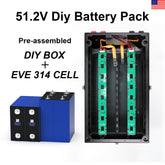

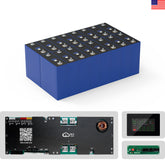

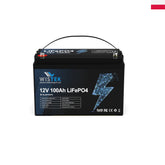
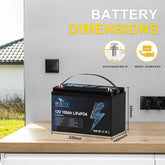
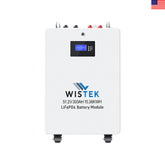
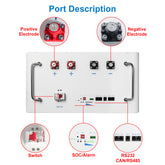
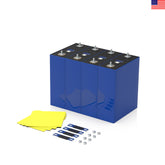
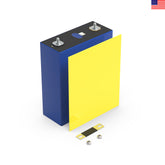
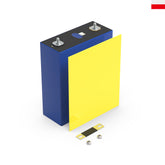

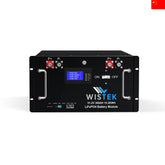
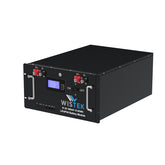
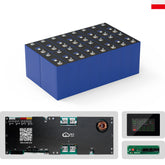








Leave a comment
All blog comments are checked prior to publishing